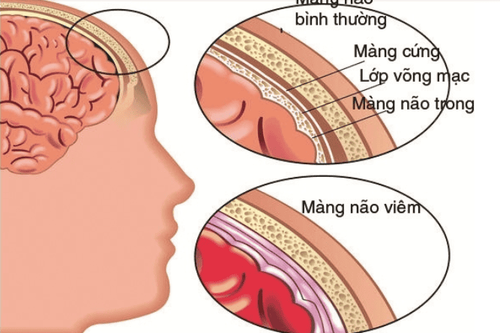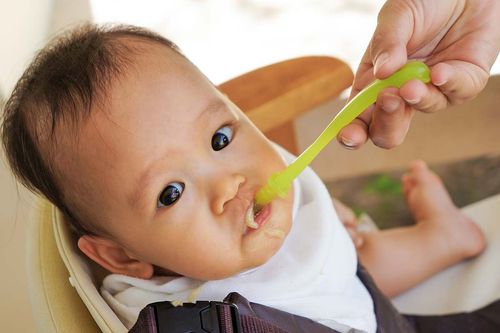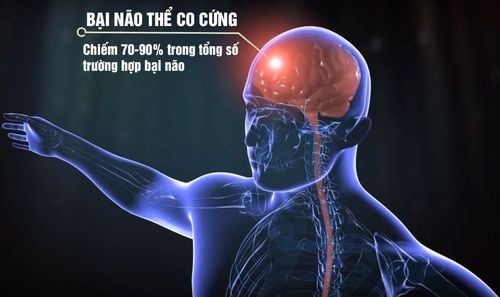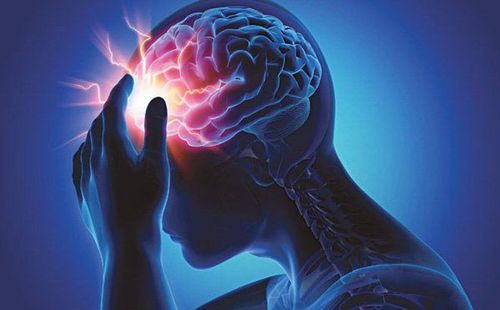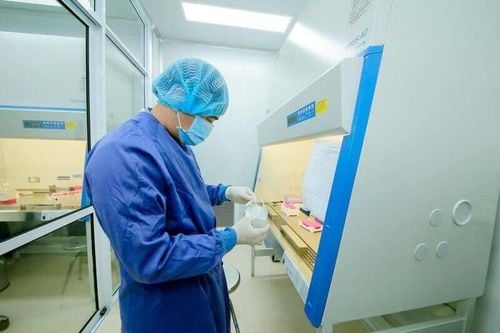This is an automatically translated article.
The article was written by Master, Doctor Vu Duy Chinh - High-Tech Unit for Treatment of Cerebral Palsy and Autism, Vinmec Times City International Hospital.Children with cerebral palsy face difficulties in all aspects. Caring for children with cerebral palsy should pay attention to daily postures such as holding, sitting, lying... to prevent bone and joint deformities, help children with better circulation and improve motor function .
1. Notes when taking care of children with cerebral palsy
Children with cerebral palsy often have the following abnormal postures:Wrist and elbow joints are always flexed, which can lead to contractures (shortened muscles) and the child's inability to straighten arms and hands. Feet that are always in the spade position can lead to contractures that limit range of motion, which makes it more difficult for children to bathe, do laundry, and go to the toilet. Twisted posture can lead to scoliosis and pelvic dislocation. If the head is always tilted to one side, the neck can become permanently crooked. If a child with cerebral palsy is likely to contract or begin to contract, try to position the child in a position where the injured joint is stretched. Find ways to do that through activities, daily activities: lying, sitting, holding, playing, studying, bathing, exercising... Whenever possible, leave the child alone. Which posture has the effect of preventing the above deformations.
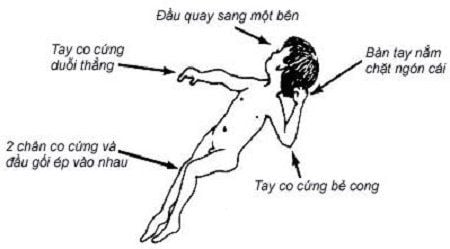
The child's head is kept straight. The body is in a straight position (no bends, no bends, no twists). Both arms are straight and detached from the torso and are used in front of the child. The child puts the weight evenly on both sides of the body on the hips, knees, and feet or hands. However, we should also not leave the child in a certain position for many hours because it is possible that the child will gradually become stiff in that position. Should always change the position of the child. It is better to encourage the child to change positions on his own. If the child is able to change positions on his own, then the chair and other equipment must not limit movement. Use assistive devices that limit the child's movement as little as possible.
2. Correct postures for children with cerebral palsy
2.1. Sitting posture Correct sitting posture in the chair:Head slightly forward. Back straight, sit not to one side, hips should touch the back wall of the chair. Folding pillow perpendicularly. Legs are a bit shaped. The soles of the feet rest on the floor or are supported by a foot brace. Correct posture on the floor:
Sit on a large area. Back straight. Sitting cross-legged helps the hip rotate out. Children with poor balance (cerebral palsy, paralysis or other disabilities) often sit with their legs crossed (W-shape) to prevent falling. This is a way of sitting that can cause deformation, injury or dislocation of the hip, knee, so it is not recommended for children to sit in this position. However, if this is the only way the child can sit and use his hands, then it may be okay to allow him to sit this way.
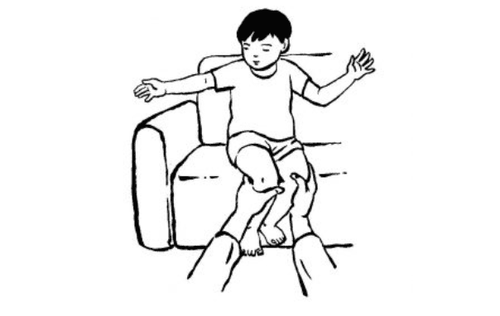
3. Enhance communication and interaction with children with cerebral palsy
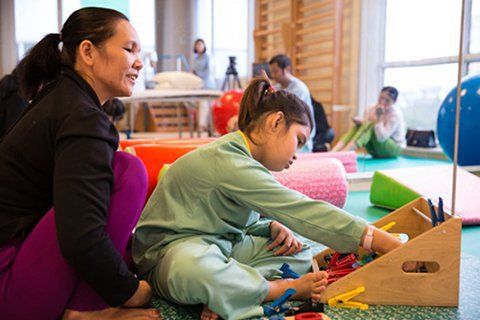
Children with cerebral palsy also have communication and interaction needs like normal children, the need for fun and entertainment. Verbal communication is a difficult problem when caring for a child with cerebral palsy. Therefore, caregivers will tend to choose other methods of communication that are appropriate such as gestures, gestures, signs, images...
Speech therapists can help improve language and communication status of children through exercise of mouth muscles such as sucking, eating, blowing out candles, sucking water, etc. This will facilitate the mouth muscles to work better. , which improves communication, both through facial expressions and words, making speech clearer. If lack of muscle control makes speech too difficult, therapists can help teach the use of an augmented communication device or sign language.
It is necessary for children with cerebral palsy to increase participation in fun activities with peers of the same age, increase contact and communication with people in the community, create confidence for children, limit fear fear in children when going out, when meeting strangers because this increases the child's excitability and increases spastic cerebral palsy.
Please dial HOTLINE for more information or register for an appointment HERE. Download MyVinmec app to make appointments faster and to manage your bookings easily.





